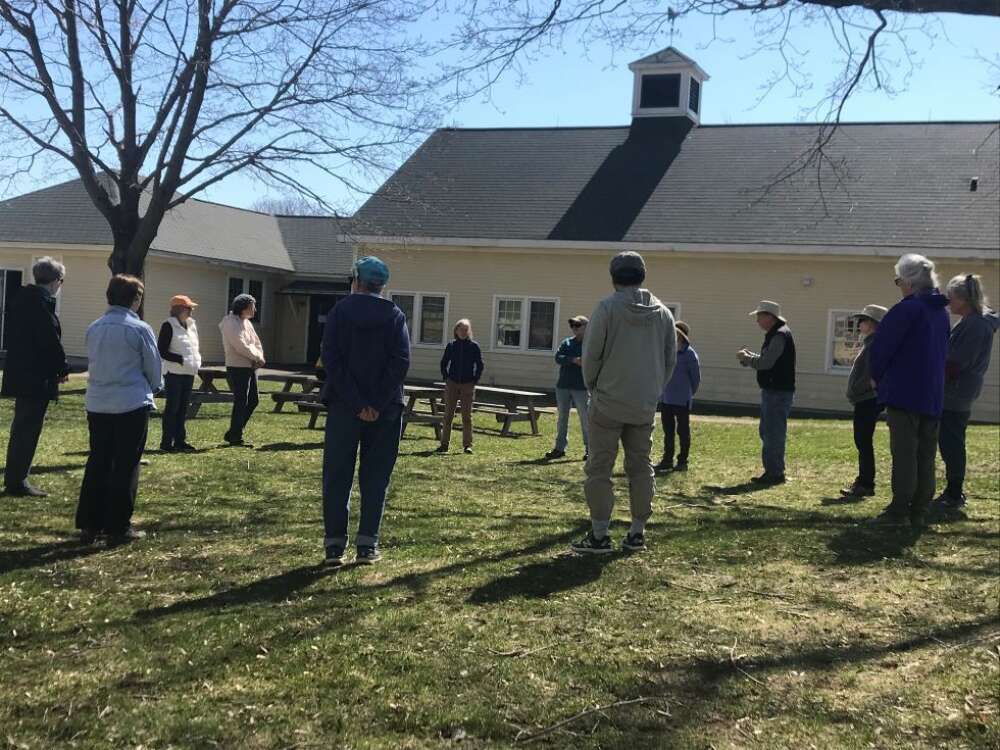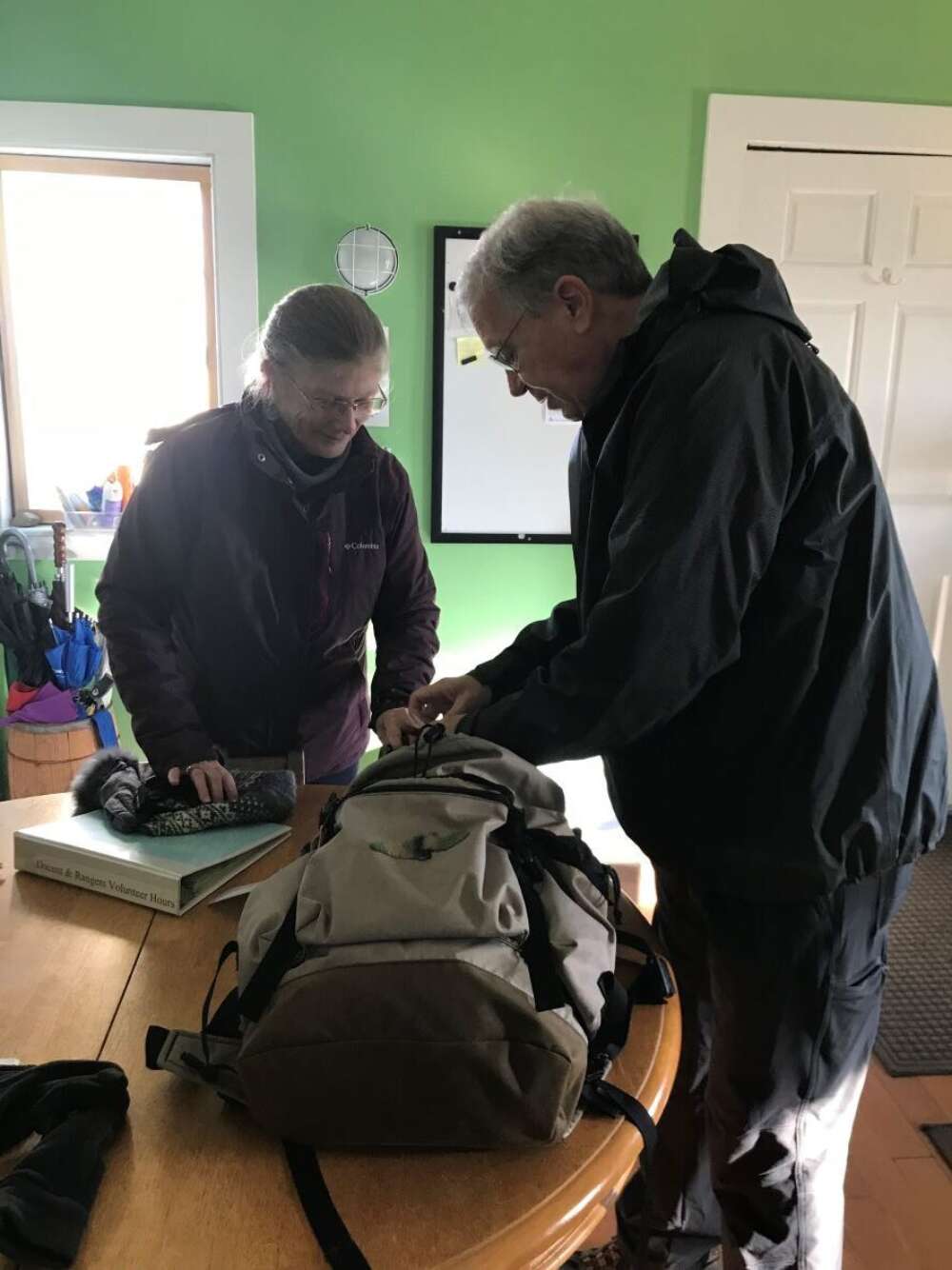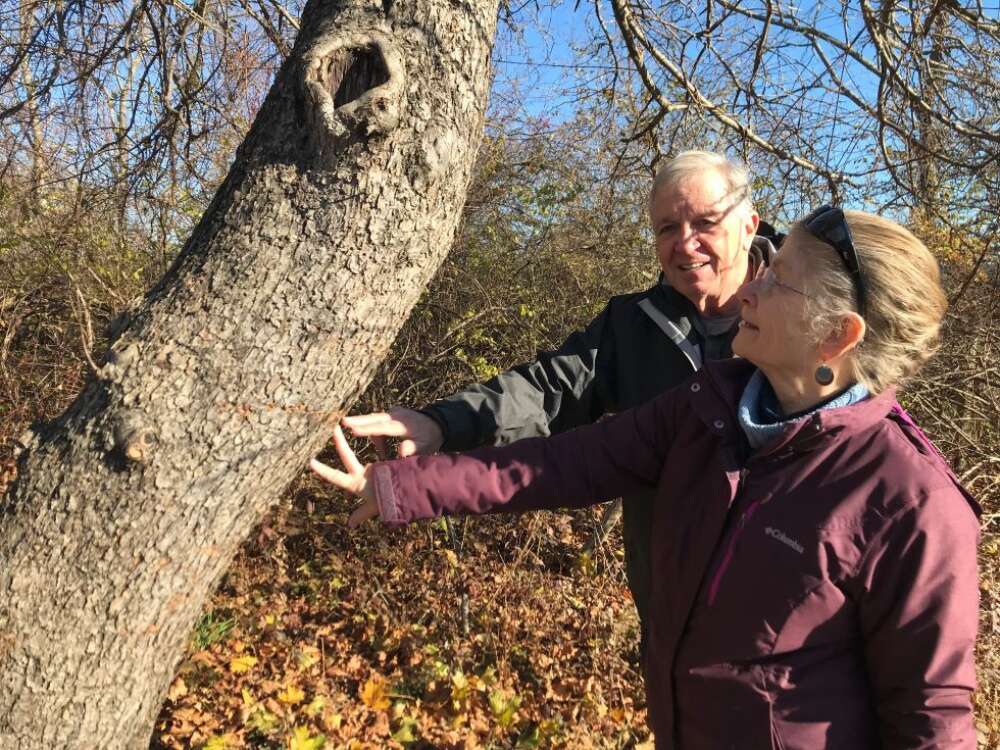The Wrack
The Wrack is the Wells Reserve blog, our collective logbook on the web.
The Wrack is the Wells Reserve blog, our collective logbook on the web.
What can you say about a mummichog?
Until this year, Ed and Amy Francis had not pondered this question. Then they decided to volunteer as Wells Reserve docents.
This decision led to new and deeper questions, lively emails, and fellowship with other volunteer docents committed to introducing students to the value of estuaries and the wonders of nature.
In the case of the Reserve, the word “docent” describes a volunteer who leads guided group walks for visitors of all ages.
Before becoming volunteers, this pair of avid birders discovered the Reserve several years ago after moving to Kennebunkport. In February, they attended an interactive online presentation describing the role of volunteer docents.
Ed chuckles, “I realized when at the meeting, 'Oh, they want us to sign up!'”
And they did. Amy recalls being impressed by volunteers who talked about their experiences as docents.
I felt there was so much intelligence, so much knowledge generously shared. Being a docent sounded great. I have been involved with kids since we had our own and had them in school. I always enjoyed seeing kids out and learning something and always appreciated what a field trip can do for them. I thought this would be a chance to learn coastal science. I worked in biological engineering at MIT but I wasn’t a science person.
Ed and Amy discovered the journey to becoming a docent is not made alone. At the spring training sessions, new and experienced volunteers circled up to introduce themselves. Ed felt comfortable from the beginning.
I was blown away by the welcoming aspect of the group and how well volunteers seemed to be looking out for each other, and finding ways to support each other. A good team doesn’t happen accidentally. It has to be nurtured. Fostered. And those aspects are here.

Ed is no stranger to teamwork.
The work I did in my professional career involved teams of 60-100 people building large systems, like air traffic control systems or radar systems. As a science nerd, I gradually became responsible for more management of projects. I learned, then taught group dynamics and leadership programs. What I see here [at the Reserve] that is just fascinating are team building skills at work. Volunteers, even new volunteers, are invited to contribute. You are listened to. It is much more common, particularly in industry, for the new person to be expected to be quiet and “learn how we do it.”
Ed calls the docent training sessions “the magic behind the scenes.” Under the guidance of Program Coordinator Caryn Beiter, docents engage with coastal science, and discuss how to present concepts without lecturing to students.
There is a sense of shared responsibility with the ability for each volunteer to set their own pace and put information in their own words, which Ed appreciates.
The programs aren’t scripted. They are flexible. We do more than learn and recite. We don’t have to do things the same way each time. I really like that about the docent training program here.
Amy found her fellow volunteers to be patient and kind. Learning about the estuary was a new endeavor, but like most docents (and most volunteers in general), Amy is a lifelong learner.
The estuary is something else I can learn about! It’s been fun. I think the extensive training is what made me brave enough to actually participate in school programs!
Still, there are questions, and moments of pause. Ed wondered about how the concept of a mummichog “mascot” could be used with student groups. Mummichogs are small fish commonly found in salt marshes along the East coast. They serve as a food source for larger fish and birds, and adapt well to the changing tides.
It would be worth the effort to introduce this fish to students when talking with them about the estuary. But, what should one say? Ed felt comfortable approaching the docent group with his questions.
We have these mascots and we tell the kids, “This is our mascot.” What do I say about mummichogs? As one experienced docent put it, you have to complete the mascot’s “Environmental Profile!” You have to make the mascots come to life. I thought it was just genius.

Docent volunteers gather in a collegial group, awaiting the arrival of students. The scene is a familiar one on weekday mornings in spring and fall. A sense of anticipation, activity and teamwork is in the air! In between tours and training, group members ask questions and offer support. Ed appreciates the exchange of ideas.
I enjoy our back and forth emails discussing aspects of the programs. Docents put energy into their emails! It is one of the things I value about volunteering here. One gets a chance to interact not just at a superficial “Let’s go have a beer” level, which can be wonderful, too. We can get together and talk about the estuary all we want!
One doesn’t always know what to expect when committing to a volunteer role. Amy says there have been some pleasant surprises.
When we started the Exploring Estuaries program, my initial understanding was that there would be training, then school visits in a 1 ½ month period. It is really nice to see the connection between the docents go on all year, to see prior docents attending training and refreshing their knowledge. I realized it was important to have them there. “Don’t worry if you don’t get it the first time” is something I heard often.
Ed agrees. Both he and Amy are skilled at teamwork, but they didn’t necessarily expect it to become such a highlight of their first year as volunteers.
I don’t think the camaraderie is something you would anticipate automatically. It has been a wonderful surprise. There seems to be an appreciation among all of the docents for whatever the others bring to the table. It’s as close as I get to working on a team, and not just on the day.

The Reserve is still a great place to walk the trails and spot birds, but Ed notes a deeper understanding since becoming a docent.
The Reserve has become more important to us now that we know more about it. First we met great people and enjoyed the opportunity to do something really interesting. We got some education and were drawn into the mission of the Reserve. I didn’t make that connection until I became a volunteer. Then I thought, I’ve got a bunch of school children here. What if they are blank slates like I was? What if they walk away with just one nugget of insight that will make them aware of the importance? Pretty cool!
Amy smiles when Ed says the only thing being a docent lacks is medical benefits. True, but they are still having a healthy good time. Amy says that the docent team is one in which all get to play.
Everyone. No one is on the bench! Unless you're too tired!
She laughs and Ed picks up the metaphor as a skilled teammate would.
You can sit out for a little while, but you’re comin’ back in!
Now that you’ve met Ed and Amy, and have a few nuggets of wisdom about mummichogs, would you like to come off the bench and be part of our supportive and fun team of docent volunteers? We’d love to hear from you!
All across the Reserve, our volunteers make incredible teammates. For more information, contact me at lbenoit@wellsnerr.org or call 207-646-1555, extension 118.